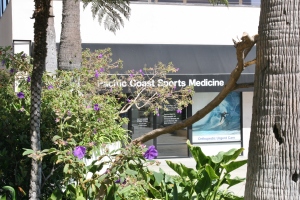Before & After Surgery
PATIENT INSTRUCTIONS
[one_half_last]

[/one_half_last]
Before Surgery
- Do not eat or drink anything after midnight the night before surgery.
- If you have a change in your condition leading up to surgery, notify the office. (cough, cold, flu, fever, infection, etc.)
- Allergies to medications and the specific reaction to those medications must be disclosed to your surgeon.
- Make sure your surgeon knows all medications you are taking.
- You will normally be allowed to take blood pressure medication with a sip of water the morning of surgery.
- If you are taking any NSAIDs (Non-Steroidal Anti-Inflammatory Drugs): (aspirin, ibuprofen, naproxen, etc.), notify the office. You may be asked to discontinue these medications one week prior to surgery.
- You will need to arrive at the surgery center one hour prior to the scheduled time of your procedure to be prepared for the surgery.
- Wear loose, comfortable clothing to the surgery center.
- Take your medication list, health history, and insurance information with you to the surgery center.
- Do not take any valuables to the surgery center.
- You must have someone else drive you home after your procedure. Due to anesthesia, you may not drive yourself. Public transportation is not acceptable.
[one_half]
[/one_half]
[one_half_last]
[/one_half_last]
After Surgery
- You should have a responsible adult with you for the rest of the day and during the first night for your safety.
- Begin your dietary intake with sips of water and a light diet slowly advancing to solid foods as tolerated.
- A sore throat may occur and should resolve in 24-48 hours.
- Some nausea is common.
- Perform deep breathing exercises every hour while awake for the first 24 hours.
- Elevate the affected limb as much as possible for the first 48 hours.
- Apply ice to the area in 20 minute increments for the first 24-48 hours.
- Wiggle your fingers and toes frequently.
- Do not drink alcohol for the first 24 hours.
- Do not drive a motor vehicle for the first 24 hours.
- Do not operate dangerous machinery for the first 24 hours.
- Do not make critical decisions for the first 24 hours.
- Do not sign legal documents for the first 24 hours.
- If you had lower extremity surgery, crutches or a walker will normally be provided and specific weight-bearing instructions will be given.
- If you had arthroscopic knee surgery, weight-bearing as tolerated on crutches is the standard instruction.
- Keep the dressing clean and dry.
- Notify your surgeon if you experience excessive bleeding from your surgical site.
- Contact your surgeon if your pain is not controlled adequately with the pain medication as prescribed.
- Contact your surgeon if numbness persists after the anesthetic wears off.
- If you have a splint or cast, contact your surgeon if you develop numbness, increasing pain, excessive swelling, inability to move fingers or toes, cold digits, pale or blue skin.
- If you had arthroscopic surgery—you may remove the dressing in 24 hours and apply bandaids over the incisions. Keep the wounds dry.
- Avoid strenuous activities for the first 24 hours and as directed by your surgeon.
- Contact your surgeon if you notice signs of infection: excessive redness, excessive swelling, excessive warmth, fever, red streaks, increasing pain, pus-like drainage.
- Call your surgeon’s office to schedule a follow-up appointment.



